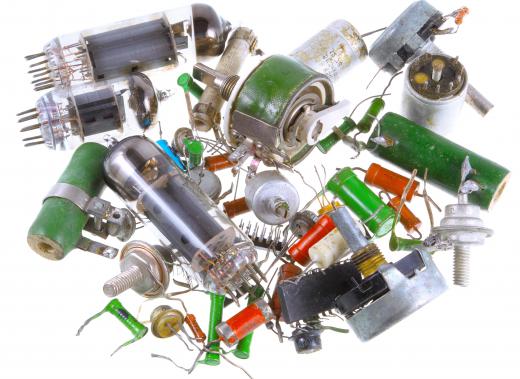In an electrical circuit, a resistor acts as a fixed restriction to current flow without switching the current completely on or off. A variable resistor allows for finer control over current by changing the amount of resistance. As resistance increases, the amount of current decreases. Some examples of variable resistors are the volume control knob on a radio and a dimmer switch used for a light. Rheostats and potentiometers are two common types of these devices.
Variable resistors have two basic components. The material that provides the resistance is called the element. The element has one of two types of tracks: linear or logarithmic.

A linear track means the change in resistance is constant throughout the whole element. In general, a linear track variable resistor will have one-half total possible resistance when the wiper is in the direct center of the track. A logarithmic track has a slow change in resistance at one end and a much faster change at the other. In a logarithmic track, the halfway point of the element is not one-half total possible resistance.

The movable component, which is used to set the resistance, is called the wiper, or brush. Depending on the construction of the resistor, the wiper will often be controlled with a sliding switch or knob. To complete the circuit, the wiper makes contact anywhere along the length of the element. The resistance will change based on where the wiper contacts the element.

A rheostat is the simplest type of variable resistor, designed to handle the full current of the circuit. Generally, it has only two terminals and is placed in series with the load it controls. The circuit is directly wired to the element and to the wiper. Rheostats are generally larger than potentiometers because of the loads they must carry.
Visually, the element is the most recognizable part of a rheostat. Wire length affects resistance, so the coil of wire increases the available length, thus increasing the possible resistance. As the wiper passes over the coil, resistance increases or decreases.

A potentiometer is a variable resistor that allows much finer control than a rheostat, because it also functions as a voltage divider. It supplies a voltage other than what is available to the circuit from the power supply. It usually has three terminals, one of which is used for reference voltage, which increases precision. The element in a potentiometer is usually a carbon film.
